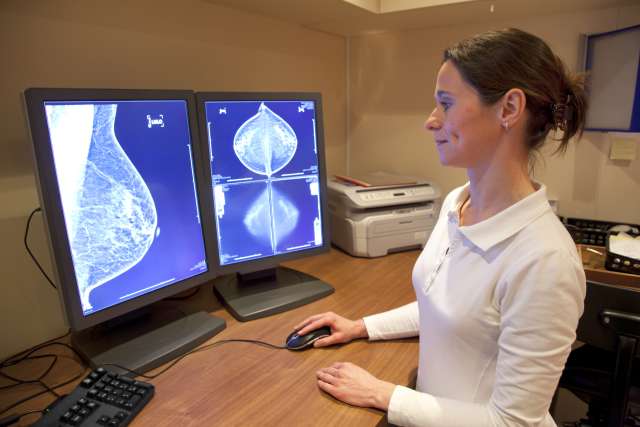With the growing number of skin biopsies performed annually for suspected melanoma, a simple, easily understood standardized classification system for melanocytic lesions is increasingly important to aid pathologists and clinicians who examine millions of tissue samples each year and to alleviate patient confusion and anxiety.
Skin biopsies, particularly those suspicious for melanoma, are some of the most complicated for pathologists to diagnose. Furthermore, pathology reports for skin biopsies are often filled with varied and complicated medical terms that can make a diagnosis or treatment plan unclear for medical providers. With increased access to medical records and other digital resources, patients now share in the confusion and growing unease when reading their own skin biopsy reports.
In recognition of these issues, an expert panel of three internationally-recognized dermatopathologists, with assistance from an expert team of researchers, have developed and now revised the Melanocytic Pathology Assessment Tool and Hierarchy for Diagnosis schema (MPATH-Dx), a classification system with the potential to be embraced by pathologists and clinicians worldwide for increased clarity in reporting. The updated schema, called MPATH-Dx Version 2.0, simplifies the diagnoses of all melanocytic skin lesions undergoing biopsy into four classes (ranging from MPATH-Dx Class I benign low risk lesions, i.e., in general, banal nevi (or moles) posing little threat to patients to much higher risk Class IV thick invasive melanoma cases that require appropriate surgical removal and consideration of additional evaluation for tumor spread and more advanced treatments and surveillance). The MPATH-Dx schema thus provides suggested guidance on how to best treat the patient for each of the four classes.
This project was conducted by lead author Dr. Raymond L. Barnhill, Institut Curie, Paris, and UFR of Medicine University of Paris, two other members of the expert panel of melanoma pathologists, Dr. David E. Elder, University of Pennsylvania and Dr. Michael W. Piepkorn, University of Washington, senior author Dr. Joann G. Elmore at UCLA, and other expert researchers. The authors examined and made improvements to the original MPATH-Dx system by incorporating feedback from U.S. dermatopathologists participating in an NIH-funded study and from members of the International Melanoma Pathology Study Group (IMPSG). .
“Pathology reports can be confusing for both patients and the primary care physicians. This new tool will help provide clarity in what the pathology diagnosis is to these end users, along with simple guidance on the risk level of the lesion and appropriate treatment,” said Elmore, a professor of medicine at the David Geffen School of Medicine at UCLA, and member of the UCLA Jonsson Comprehensive Cancer Center. “In the past, primary care physicians might biopsy a patient’s suspicious looking skin lesion and receive a pathology report that states: ‘junctional dysplastic nevus with low-grade atypia’ and the primary care physician might not know what this means for the patient regarding underlying risk of melanoma and what, if any, additional treatment or surveillance, is best for this patient. When pathologists’ use the MPATH-Dx schema as an adjunct tool, the pathology report would include additional summary information stating ‘MPATH-Dx Class I, no further treatment required’, thus reducing provider confusion and patient anxiety.”
In summary, the primary aim, according to authors, is to have a robust adjunct tool available to support pathologists that can be used for standardizing diagnostic reporting of melanocytic lesions and management of patients to the benefit of both health care providers and patients.
Additional paper co-authors are: Stevan Knezevich of Pathology Associates in Clovis, California; Lisa M. Reisch at the University of Washington; Megan M. Eguchi and Alistair Cochran at the David Geffen School of Medicine, University of California, Los Angeles; Boris C. Bastian, Michael Tetzlaff, and Iwei Yeh at the University of California San Francisco; Willeke Blokx at the University Medical Center Utrecht, the Netherlands; Marcus Bosenberg at the Yale Medical School, New Haven, CT; Klaus J. Busam of the Memorial Sloan Kettering Cancer Center, New York, NY; Richard Carr of the South Warwickshire NHS Trust in Warwick, UK; Martin G. Cook of the Royal Surrey NHS Foundation Trust, Guildford, UK; Lyn M. Duncan, Massachusetts General Hospital, Harvard Medical School, Boston, MA; Rosalie Elenitsas and Xiaowei Xu at the University of Pennsylvania; Arnaud de la Fouchardière at the Centre Léon Bérard and University of Lyon, France; Pedram Gerami at the Northwestern University Feinberg School of Medicine in Chicago, IL; Iva Johansson at Sahlgrenska University Hospital, Gothenburg, Sweden; Jennifer Ko at the Cleveland Clinic, Cleveland, OH; Gilles Landman at the Universidade Federal de São Paulo (UNIFESP), Brazil; Alexander J. Lazar at the The University of Texas MD Anderson Cancer Center, Houston, TX; Lori Lowe at the University of Michigan; Daniela Massi at the University of Florence, Italy; Jane Messina of the Moffitt Cancer Center, Tampa, FL; Daniela Mihic-Probst at the University Hospital Zurich, Switzerland; Douglas C. Parker at the Emory University School of Medicine, Atlanta, GA; Birgitta Schmidt at Boston Children’s Hospital, Harvard Medical School, Boston, MA; Christopher R. Shea at the University of Chicago; Richard A. Scolyer at The University of Sydney, Australia; and Artur Zembowicz at Tufts University, Boston, MA and Dermatopathology Consultations LLC, in Needham, MA.
The study was supported by National Cancer Institute grants R01 CA201376 (JGE), R01 CA151306 (JGE), R01 CA201376 (BB), and R35 CA220481 (BB), the National Health and Medical Research Council (NHMRC) Australian Government, grant APP1141295 (RAS), Melanoma Research Alliance (grant 622600; JGE), and Department of Defense award W81XWH2010797 (JGE).
Article: .




